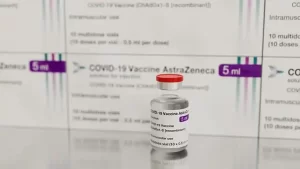What is the 5-year survival rate for colorectal cancer?
- Global First: Bovine Avian Influenza Transmission to Humans Detected
- Potassium-Enriched Salt Substitutes: Reducing Blood Pressure Risk?
- Tritium Detection in Fukushima’s Seawater: Below Safety Standards
- What Reason Let AstraZeneca Withdraws COVID Vaccine From The Market?
- How Many Times Can a Cancer Patient Undergo Chemotherapy?
- What are the WHO recommendations for Japanese encephalitis vaccines?
What is the 5-year survival rate for colorectal cancer?
- AstraZeneca Admits for the First Time that its COVID Vaccine Has Blood Clot Side Effects
- Was COVID virus leaked from the Chinese WIV lab?
- HIV Cure Research: New Study Links Viral DNA Levels to Spontaneous Control
- FDA has mandated a top-level black box warning for all marketed CAR-T therapies
- Can people with high blood pressure eat peanuts?
- What is the difference between dopamine and dobutamine?
- How long can the patient live after heart stent surgery?
What is the 5-year survival rate for colorectal cancer?
Colorectal cancer is the most common digestive tract tumor, and its incidence and mortality rates are on the rise.
Incidence rates are significantly higher in urban areas compared to rural areas, and the incidence of colon cancer has been rising notably. Most patients are diagnosed in the advanced stages.
The diagnosis and treatment of colorectal cancer can involve various approaches, including surgery, chemotherapy, radiotherapy, imaging assessments, pathological evaluations, and endoscopy.
Research has shown that a multidisciplinary approach, known as Multidisciplinary Team (MDT) treatment, can improve the level of care for colorectal cancer.
The prognosis of colorectal cancer is primarily related to the stage of the disease.

In Japan, the average 5-year survival rate for colorectal cancer is 72.5%:
- Stage I has a survival rate of 94.5%
- Stage II is 88.4%
- Stage III is 77.3%
- Stage IV is 18.7%.
The survival rate for colon cancer is 72.6%.
- Stage I at 94.5%
- Stage II at 89%
- Stage III at 78.2%
- Stage IV at 19.5%.
For rectal cancer, the average 5-year survival rate is 72.4%:
- Stage I at 94.4%
- Stage II at 87.2%
- Stage III at 76%
- Stage IV at 22.7%.
In the United States, the average 5-year survival rate for colon cancer is 63%:
- Early-stage at 91%
- Mid-stage at 72%
- Late-stage at 13%
For rectal cancer, the average 5-year survival rate is 68%
- Early-stage is 90%
- Mid-stage is 74%
- Late-stage is 17%.
In China, the average 5-year survival rate of colorectal cancer is 56.9%
- Stage I colorectal cancer is around 80-90%
- Stage II is approximately 70%,
- Stage III ranges from 30-50%
- Stage IV is about 10%.

Colorectal cancer screening can reduce its incidence and mortality.
Currently, recommended screening methods include risk assessment and fecal occult blood testing, with colonoscopy performed if the results are positive. In recent years, fecal DNA testing has further improved the efficacy of colorectal cancer screening.
International experience also suggests that in areas with more developed medical resources, direct colonoscopy screening every 3-5 years can yield good screening results.
Early-stage colorectal cancer may have no obvious symptoms, but as the disease progresses, symptoms such as changes in bowel habits, altered stool consistency (thin stools, bloody stools, mucus in stools), abdominal pain or discomfort, abdominal masses, intestinal obstruction-related symptoms, and systemic symptoms like anemia, weight loss, fatigue, and low-grade fever can develop. In later stages, patients may experience lower back pain, jaundice, and ascites, among other symptoms.
Additionally, colorectal cancer incidence may be associated with conditions such as ulcerative colitis, colorectal polyps, colorectal adenomas, Crohn’s disease, and schistosomiasis.
Furthermore, hereditary colorectal cancer accounts for approximately 6% of the overall colorectal cancer incidence. Patients with a family history may be affected by conditions such as Lynch syndrome (LS) and familial adenomatous polyposis (FAP).
Why the 5-year survival rate for cancers is the important data?
The 5-year survival rate is an important and widely used measure in cancer statistics for several reasons:
Standardized Comparison:
The 5-year survival rate provides a standardized way to compare the outcomes of different cancer types and stages. This allows healthcare professionals, researchers, and policymakers to assess and prioritize resources and interventions for different types of cancer.
Patient and Family Understanding:
It offers a straightforward way for patients and their families to understand the prognosis associated with a particular cancer diagnosis. It provides a sense of what percentage of people with the same diagnosis are likely to survive for at least 5 years after their diagnosis.
Treatment Effectiveness:
The 5-year survival rate is a valuable indicator of how effective treatments have been in improving cancer outcomes. It can help evaluate the impact of advances in early detection, treatment options, and supportive care.
Research and Development:
Researchers and scientists use 5-year survival data to assess the efficacy of new treatments and interventions. It guides ongoing research efforts to improve cancer care.
Healthcare Policy:
Policymakers and healthcare organizations can use 5-year survival data to allocate resources, plan public health campaigns, and prioritize cancer prevention and early detection initiatives.
Clinical Trials:
The 5-year survival rate is often used as a benchmark in clinical trials to assess the effectiveness of experimental treatments compared to standard treatments or placebos.
Patient Decision-Making:
For patients, the 5-year survival rate can be a factor in their decision-making process regarding treatment options, including the potential benefits and risks.
However, it’s important to recognize that the 5-year survival rate has limitations:
- Time Period: It provides a snapshot of survival at 5 years from the time of diagnosis. It doesn’t account for long-term survival or account for the possibility of some individuals living much longer with the disease.
- Individual Variability: Cancer outcomes can vary widely based on many individual factors, including age, overall health, access to quality healthcare, and response to treatment. Therefore, these rates represent averages and should not be used to predict an individual’s outcome.
- Advances in Care: The 5-year survival rate may not fully reflect the impact of recent advances in cancer care and treatment. Therefore, more recent data and additional measures, such as progression-free survival and overall survival, may provide a more comprehensive view of cancer outcomes.
In summary, while the 5-year survival rate is a valuable and informative metric, it should be considered alongside other data and clinical information to provide a complete picture of cancer prognosis and treatment effectiveness.
What is the 5-year survival rate for colorectal cancer?
References:
1. Zeng H, Chen W, Zheng R, et al. Changing cancer survival in China during 2003–15: a pooled analysis of 17 population-based cancer registries. The Lancet Global Health, 2018, 6(5): e555-e567.
2. 大腸がん(結腸がん・直腸がん) 患者数(がん統計):[国立がん研究センター がん情報サービス 一般の方へ] https://ganjoho.jp/public/cancer/colon/patients.html
3. Colorectal Cancer Survival Rates | Colorectal Cancer Prognosis。 https://www.cancer.org/cancer/colon-rectal-cancer/detection-diagnosis-staging/survival-rates.html
(source:internet, reference only)
Disclaimer of medicaltrend.org
Important Note: The information provided is for informational purposes only and should not be considered as medical advice.



